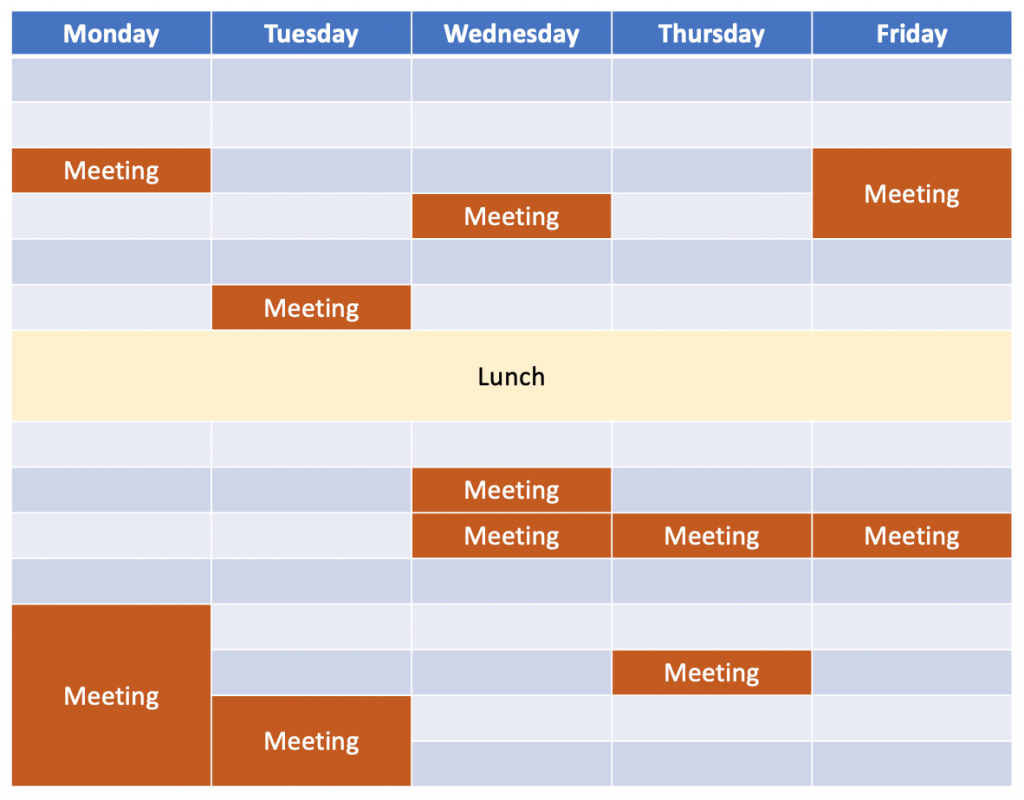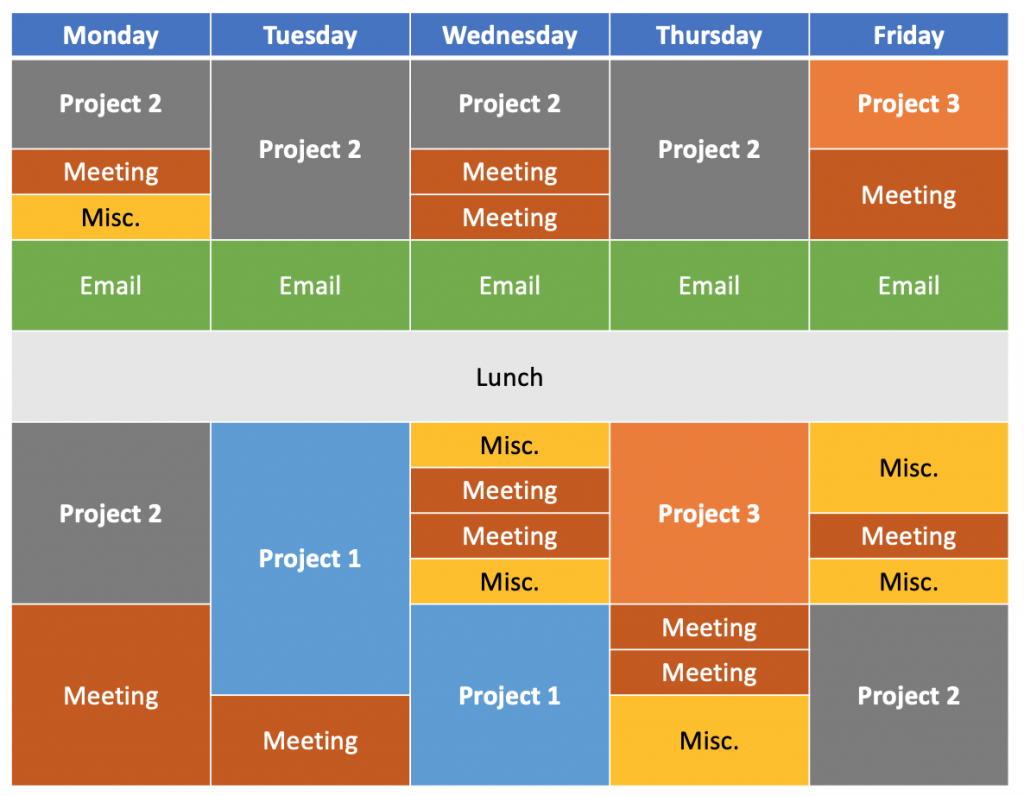Controlling your calendar
Is your calendar preventing you from being productive?
Studies suggest it can take over 23 minutes to get back on track after you have been distracted from a task. This is why you need large blocks of uninterrupted time to get meaningful work done. But this is impossible if your calendar is poorly organized and peppered with meetings.
Fortunately, by taking 3 simple steps, you can regain control over your calendar and optimize it for productive work.
Step 1. Reviewing obligations
The first step is to calculate how much of the week is yours to control.
Begin by counting how long you spend in unavoidable meetings. To make this easier, skip a few weeks ahead in your calendar to see all the recurring appointments.
Next, assign time for email and task scheduling. One hour per day should be more than enough if you’re batching your emails. I would allow another four hours (or 10% of your week) for miscellaneous stuff. Finally give yourself a lunch break to avoid burn-out.
Here’s what the finally tally might look like:
- Meetings: 8 hours (20%)
- Email and scheduling: 5 hours (13%)
- Misc. tasks: 4 hours (10%)
- Lunch: 5 hours (13%)
- Unallocated: 18 hours (45%)
Notice that we’re down to 45% of our working week and we haven’t done anything meaningful yet. This shows why it’s important to be crystal clear what you do with your discretionary time.
Step 2. Splitting time between tasks
You probably have more than one important thing to get done. These tasks must fit into your remaining discretionary time.
Decide on a percentage split between your projects, based on their relative importance. Don’t fret about this – it’s easy to change later.
After completing this step, your time plan might look like this:
- Meetings: 8 hours (20%)
- Email and scheduling: 5 hours (13%)
- Misc. tasks: 4 hours (10%)
- Lunch: 5 hours (13%)
- Project 1: 5 hours (13%)
- Project 2: 10 hours (25%)
- Project 3: 3 hours (8%)
Notice how Project 2 is the most important, yet it only gets 25% of your week. We all have less time than we think. It’s not only celebrities that need to say no.
Step 3. Reshape your calendar
Now the tricky part. We’ve established our goal for the week, but converting that into reality can be difficult.
Again, it’s best to look at your calendar several weeks ahead to see what ‘normal’ looks like. Here’s an example:

We now need to book appointments to get your work done. Where possible, reschedule recurring meetings to create larger blocks of free time. This may be achievable for one-to-one meetings; less so for group conference calls.
The image below shows our week with a couple of meetings shifted.

Now block out time for your tasks. Aim for large chunks of two to three hours to get serious work done. I like to put my most important task in the mornings. This increases the chance it gets done, despite what the day throws at me.
Save the miscellaneous task until last, because it’s the least important and can be chopped up to fill gaps.
The image below shows the final schedule. Every hour is accounted for.

Coping with real life
The schedule we just created is your ideal week. Unfortunately, you won’t have an ideal week. People will want to meet with you, last minute things will crop up.
You’re going to have to adapt. When unavoidable meetings arise, resize your time blocks to accommodate. Retain the percentage split among your top priorities as best you can.
But regardless what happens, by following this approach you’ve started from a position of strength. You know what you want to achieve. Curveballs will impact this, but it’s a damn sight better than beginning with a blank slate and seeing what happens.
Take control of your calendar today and unleash your full potential.